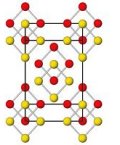The common perception of Parkinson’s disease is of a disorder that leads to problems with movement, tremors, involuntary spasms, and a shuffling gait. However, functional MRI has now confirmed that the disease can also cause widespread abnormalities in the sense of touch and vision for sufferers. An international team from the US and China presented their findings at the Society for Neuroscience meeting in Atlanta on October 17.
Research into Parkinson’s disease has previously focused mainly on the brain’s motor and premotor cortex, sidestepping the somatosensory and the visual cortex because the most prominent symptoms are associated with movement and not the senses. However, neurologist Krish Sathian of Emory University and colleagues discovered through tests of tactile ability, that PD patients also have sensory problems with touch. The researchers recently designed a study using fMRI to investigate this earlier finding and to ascertain whether or not changes in the brain underly these sensory abnormalities.
Read on…
 A bag of moss lying in an irrigation ditch in North East Italy does not conjure up a picturesque image nor the cutting edge of analytical science but nevertheless the special characteristics of the moss Rhynchostegium riparioides make it the ideal environmental monitor according to researchers at the University of Trieste and their colleagues at ARPAV.
A bag of moss lying in an irrigation ditch in North East Italy does not conjure up a picturesque image nor the cutting edge of analytical science but nevertheless the special characteristics of the moss Rhynchostegium riparioides make it the ideal environmental monitor according to researchers at the University of Trieste and their colleagues at ARPAV. Nature described this finding as “surprising, elegant, and entirely useless”. Well, the journal is half right. Solid elemental oxygen is not thought to exist anywhere on earth or even elsewhere in the universe under the immense pressures created by Malcolm McMahon and Paul Loubeyre. They and their colleagues put the squeeze on solid oxygen, which forms deep red crystals at above a million atmospheres. They used various techniques to determine the structure of this new material and found that oxygen atoms team up to form clusters of eight in the solid. A seemingly esoteric discovery you might think.
Nature described this finding as “surprising, elegant, and entirely useless”. Well, the journal is half right. Solid elemental oxygen is not thought to exist anywhere on earth or even elsewhere in the universe under the immense pressures created by Malcolm McMahon and Paul Loubeyre. They and their colleagues put the squeeze on solid oxygen, which forms deep red crystals at above a million atmospheres. They used various techniques to determine the structure of this new material and found that oxygen atoms team up to form clusters of eight in the solid. A seemingly esoteric discovery you might think. Extracting oil from olives requires solvents and residues of halogenated solvent can sometimes leave a toxic taint in the product. European Union rules restricted the acceptable levels of these residues for the sake of public health but new sensitive and precise analytical procedures are needed to allow strict quality control and regulatory testing to be carried out.
Extracting oil from olives requires solvents and residues of halogenated solvent can sometimes leave a toxic taint in the product. European Union rules restricted the acceptable levels of these residues for the sake of public health but new sensitive and precise analytical procedures are needed to allow strict quality control and regulatory testing to be carried out.